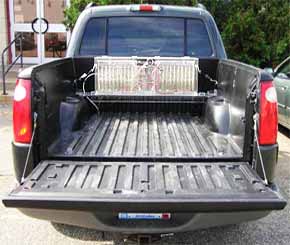Hydrogen Generator Types
Hydrogen generator types come in three flavors. A hydrogen generator can be a system that creates hydrogen.
|
Or, a hydrogen generator may be a system that is powered by H2. In a few cases, both are true. |
 |
Creates H2
A hydrogen generator that creates hydrogen comes in many different varieties. First is the hydrogen generator for cars that creates H2 through either the electrolysis of water or reformation or extraction of another hydrogen-rich chemical. There is an advertiser on this website that promotes a hydrogen generator that uses the electrolysis of water to inject hydrogen into a vehicle’s intake manifold that will increase gas mileage and decrease emissions. Many such similar devices are also available elsewhere.
Some vehicles will use a hydrogen-rich chemical compound such as sodium borohydride, ammonia, methanol or even gasoline to generate the hydrogen by reformation or extraction. The resulting hydrogen fuel will then be run through a fuel cell or internal combustion engine to power the vehicle. These hydrogen-on-demand systems generate the H2 gas while leaving behind other chemical compounds that will need to be sequestered and disposed of in one manner or another (or even recycled).
Another type of hydrogen generator is a fueling station for hydrogen cars. Not all fueling stations are generators, however. The ones that are will either reform natural gas such as the Honda Home Energy Station IV or use sunlight or wind-power to electrolyze water to create hydrogen. Besides the large commercial hydrogen fueling stations, another type of station that is being developed is the home hydrogen fueling station. These types of hydrogen generators such as being developed by Honda (previously mentioned), General Motors and perhaps even General Electric are meant to sit in one’s garage and generate fuel for one’s car.
Another kind of hydrogen generator is commonly used in the industrial marketplace. Hydrogen is generated for use for the electronics industry, petroleum refineries, metals processing, glass manufacturing and hydrogenation of food products.
Then there are ultra high purity hydrogen generators common in the medical and research fields. This type of hydrogen generator usually uses distilled or deionized water to create the high purity H2 for gas chromatography or other medical and research applications.
Powered by H2
There are a couple of types of hydrogen generators that use this gas to create electricity. One example of a small, portable hydrogen-powered generator would be the HydroPak that is being manufactured by Millennium and Horizon for emergency use or for remote areas where electricity is not readily available. A larger hydrogen-powered generator such as those produced by the Hydra Fuel Cell Corporation use the gas and a stationary fuel cell to create electricity for a home. A company such as Hydrogenics manufactures large industrial hydrogen fuel cells to provide power to businesses that want to go off-grid or as a backup power system. Computer data centers are primary targets for these kinds of hydrogen generators. In 2005, the Verizon call-switching center in Garden City, New York converted over to a UTC Power fuel cell for its primary source of electricity.
Both Creates and Is Powered by H2
There is another kind of hydrogen generator that both creates hydrogen and uses the gas to create power. An example would be clean coal power plants such as the proposed FutureGen plant or those being built in California or Italy. This type of power plant will use coal gasification to extract the hydrogen while sequestering the CO2. The carbon dioxide is then pumped underwater or underground such as in abandoned oil wells for permanent storage. The hydrogen is then used to run through a large turbine to create clean electricity.
As one can see, a hydrogen generator needs to be defined by its function as well as whether it is powered by hydrogen or creates the gas to generate power or for another use. One thing is for certain, though, is that hydrogen is a versatile element that can provide clean power coming or going. And, this is ultimately what it is all about, now isn’t it?